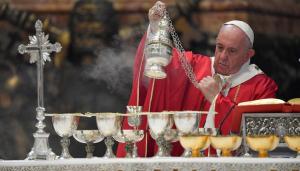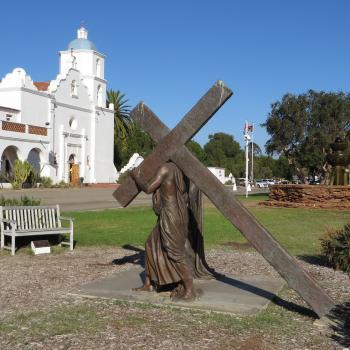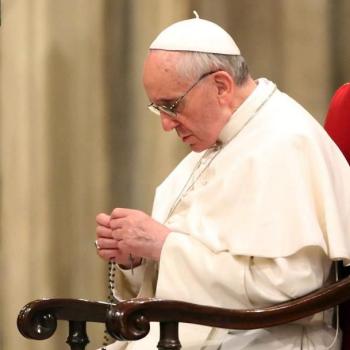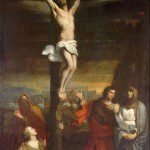How not to respond to the Pope

How to respond to the Pope
Some Honest Criticism

I am a Novus Ordo man.
I don’t agree that the Roman Missal promulgated by Pope Pius V in 1570 entombed the Roman Rite in ecclesiastical amber, such that it forever remains (as one traditionalist friend recently put it) “the most authentic expression of the Roman Church’s lex orandi [rule of worship].”
That being said, I also think that the recent apostolic letter Traditionis Custodes [Custodians of the Tradition], which attempts to repeal Pope Benedict XVI’s generous permission for easier use of the Traditional Latin Mass in the 2007 apostolic letter Summorum Pontificum, was theologically incoherent, pastorally divisive, unnecessary, cruel—and a sorry example of the liberal bullying that has become all too familiar in Rome recently.
In many American parishes where the Extraordinary Form has been offered as well as the more common Ordinary Form, the unity of the Church has not been impaired. That some proponents of the Extraordinary Form think themselves the sole faithful remnant of a decaying Church is certainly true, and their presence online is depressingly familiar. But it is an empirically unsustainable slander to suggest, as Traditionis Custodes does, that that divisive superiority complex (coupled with an ideologically-driven rejection of Vatican II) is the new normal for those who wish to worship at Masses celebrated with the Missal of 1962. Roman judgments should not be based on the hysteria and antics of the Catholic blogosphere. George Weigel, Liberal Authoritarianism and the Traditional Latin Mass | George Weigel | First Things
Support of the Pope’s Decision.

The tendency of the Latin Mass fans to self-select, to gather intentionally and often with greater effort than many parishioners, is a natural function of their passion and that’s a chief reason why they can project an image of a growing cohort. They are visible and they are often outspoken about their beliefs.
If they are small, that does not mean they are without influence. To call them liturgical One Percenters would be vastly overstating their size. But not their reach. The popularity of the Latin Mass almost perfectly tracks the opposition to Pope Francis, an opposition fueled by a conservative political agenda, lots of money, and a platform in industrialized Western countries. “The Anglo-traditionalists have targeted the Francis pontificate from day one, conducting a guerrilla warfare against this papacy,” tweeted Christopher Lamb, Vatican correspondent for The Tablet of London and author of The Outsider, a book about the conservative opposition to Francis. “The Pope is saying you can’t use the liturgy in this war anymore.”
Latin Mass Hysteria | SAPIENTIA (fordham.edu)
Bishops Respond
History & Changes
Does this idea of finding unity through the “Latin Mass” hold up to scrutiny? Fundamentally, it is based on a mistaken view of the history of the liturgy. The liturgy of the 1962 missal is not “the Mass of the ages.” It was only codified for the Western Church by Pope St. Pius V in 1570; as the liturgy of the Western Church, it only lasted for about 400 years, from 1570 to 1970. Even during that time, there were numerous changes and revisions, and of course, the various Eastern churches continued to use their own rites. Before 1570, there was a lot more diversity in the European liturgy. In some ways, liturgy in the middle ages was more like the current form of the Roman Rite than like the 1962 missal. In many places, the Mass included public intercessions (in the vernacular), a sign of peace given to the laity, and an offertory procession. There were more “options.” as they are now dismissively called. In some places, blessed bread was distributed after Mass, as it is today in some Eastern Rites. Liturgical gestures such as genuflection and kneeling only came into vogue in the 1100s. The custom of reading the beginning of St. John’s Gospel at the end of every Mass only became universal in the 1500s. In medieval Spain, there were three liturgical readings: one from St. Paul, one from the Old Testament, and one from the Gospels; this should sound familiar to those who attend the current form of the Roman Rite.
As well as all the diversity in the Western Rites, the Church has always included the many Eastern Churches with their fascinating array of liturgies. They use languages ranging from Syriac to Aramaic to Slavonic and contain many different “anaphora” (the equivalent of the “canon” or “Eucharistic prayer” of the West.) The Maronite Rite alone contains over seventy different anaphora! Language such as “the Mass of all the Ages” tends to perpetuate the unfortunate marginalization of the Christian East.
Going further back in time, the western liturgy was initially in Greek. St. Peter and St. Paul would have celebrated the liturgy in Greek, as would have most of the saints and Fathers of the Church in the first three centuries of Christianity.
If the supposed unity with the past created by attending the Mass of St. Pius V extends to those worshiping in such a diverse range of languages and liturgies, then it is hard to see why the current form wouldn’t do the job just as well! There’s more difference between the liturgy of St. Peter or the modern-day Alexandrian Ge’ez Rite and the 1962 Roman Missal than there is between the 1962 Roman Missal and the Mass of Vatican II. Malcolm Schluenderfritz,United to the Past through the “Latin Mass”? | Where Peter Is

Latin Mass Hysteria | SAPIENTIA (fordham.edu)

The US holds the monopoly on the TLM

What Next?
Pope Francis’s motu proprioTraditionis Custodes has been the cause of no small amount of alarm and sorrow in the hearts of many of the faithful. Not only alarm and sorrow but confusion and questions as well. As more than a few bishops have made clear with public statements, thinking and praying over what the Holy Father desires and how practically to bring it about has led to more points of confusion that they will look to the Holy See to clarify. This state is exacerbated by the swiftness—“entering immediately in force”—with which the document’s changes are to be implemented.
No small number of bishops have responded by saying “Status quo ante” until they have time to interpret a document they saw for the first time last Friday. Others have said nothing, doubtless discerning their best course. In effect, they are creating, in the absence of one, an ad hoc vacatio legis—a time for laws to be examined, questioned, clarified, and edited through a cooperative participation of many good minds. Pope Francis points to Pope St. Pius V, who established for the Church a single Roman missal, but the first Dominican pope gave three months (six for dioceses beyond the Alps) for his famous bull to come to complete effect.
Asking Pope Francis the Rite Questions | Catholic Answers

I have no doubt that some traditionalists will tootle off to an Eastern Rite Catholic congregation of some sort.Others will be disobedient and continue to celebrate the Traditional Latin Mass or we may see a resurgence of the Society of St Pius X or the emergence of a new schism. Not good.
I hope the priests and people who are devoted to the Traditional Latin Mass might decide to follow the way of “subversive obedience.”
Celebrating the Novus Ordo Mass does not mean everyone holding hands and singing Kumbayah.
Remember the flexibility of the Novus Ordo is a two way street. Sure, Sister Sandals and Father Fabulous might celebrate with sock puppets giving the homily and singing happy clappy folk music, but Father Biretta can also use the flexibility to his advantage.
He may celebrate the Novus Ordo in Latin. Ad Orientem. He can use all the Gregorian chant he likes. Wear fine vestments. Have well trained altar boys. Include some of the “extras” like the prayers at the altar, the Prayer to St Michael etc. Administer communion to the faithful kneeling and on the tongue. Encourage traditional devotions in Latin.
In other words let’s celebrate the Novus Ordo Mass joyfully, reverently and obediently fully informed and guided by the Traditional Latin Mass.

-Raymond Leo Cardinal Burke Statement on the Motu Proprio «Traditionis Custodes» – Cardinal Raymond Burke (cardinalburke.com)

Traditionis Custodes is a reminder that as a whole the Eucharist must be celebrated in a manner that draws the faithful into the Mystery of God. It must be celebrated reverently and beautifully regardless of language or Missal.
Pope Francis has not banned the Latin Mass.
Those who are weeping and disgracefully disparaging Pope Francis must have not read the document. The same goes for those who see this as a victory over those who prefer the Extraordinary Form. The document is brief and direct, it’s worth a read. Father Pablo Migone, Pope Francis, Traditionis Custodes, and the Latin Mass (patheos.com)













